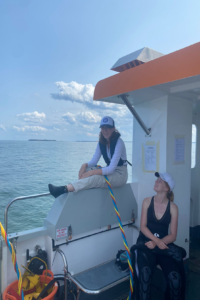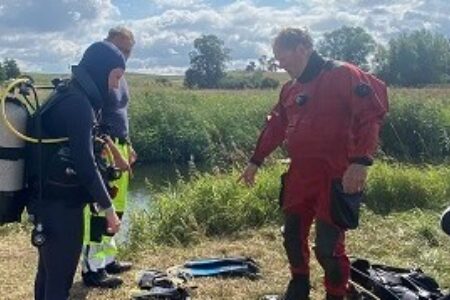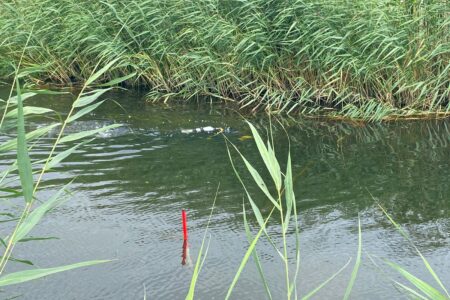Greifswald & Tollense field school - Part 4
During the months of July and August, students from Leiden University, Rostock University and Göttingen University research shipwrecks in the Greifswald Bay and a prehistoric site at the Tollense river in Germany.

In this blog, student Katrina Konzuk describes the last day in Greifswald Bay in which the students research the Gunship Wreck.
The Gunship Wreck
Saturday was our final day in Greifswald Bay, and we chose to conclude our expedition with Monchgut FP 113; known to us as the Gunship Wreck. Three meters below the surface of the water sits a Swedish warship from the 18th century, which sank with a full inventory. The most impressive finds constitute a bronze bell featuring the stamp of the Royal Swedish Bell Maker; and dozens of canons with plugs still inside.
Our original goal for visiting Greifswald Bay this week was to further survey this ship, but other more pressing issues diverted our attention to wrecks like FP 88. Therefore, only our final day on the research vessel Limanda was spent on this warship, to survey and sketch it. Thankfully the weather was calm in the morning, and we were able to quickly get everyone out on a dive to see the ship, because our final afternoon had to be spent de-mobbing the boat; gear taken apart and taken off board.

Diving to the Gunship Wreck
Our dives started early in the morning and visibility was low, less than a meter, so with the strong current it was quite the event to swim from Limanda to the buoy marking the wreck, find the wreck without drifting off and then stick with your dive buddy as you explored the ship.Everything underwater is covered in a fine layer of sand and sea life, but once you pushed the shrimp, jelly fish, seaweed, and sand away, you could see canons, rope, wooden planks and stone blocks; all aboard or part of the ship when it sank.
After an hour, I surfaced with my buddy, and we spent the rest of the day helping others with their dives, and writing reports.
This is an amazing site and we hope to be able to investigate it further next year, during our next field school in Greifswald Bay.






0 Comments